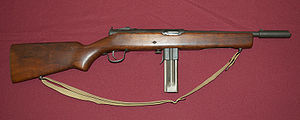Hello ladies and gents this is the viking telling you that today we are talking about

The .45 Reising submachine gun was manufactured by Harrington & Richardson (H&R) Arms Company in Worcester, Massachusetts, USA, and was designed and patented by Eugene Reising in 1940. The three versions of the weapon were the Model 50, the folding stock Model 55, and the semiautomatic Model 60 rifle. Over 100,000 Reisings were ordered during World War II, and were initially used by the United States Navy, Marine Corps, and the United States Coast Guard, though some were shipped to Canadian, Soviet, and other allied forces to fight the Axis powers
History
The Reising submachine gun was innovative for its time, and in comparison to its main rival the famous Thompson Model 1928 submachine gun, it possessed similar firepower, better accuracy, excellent balance, light weight, plus a much lower cost and greater ease of manufacture. But poor combat performance of the Reising contrasted with favorable combat and law enforcement use of the Thompson forever mired the weapon in controversy.
Reising was an assistant to firearm inventor John M. Browning. In this role, Reising contributed to the final design of the US .45 Colt M1911 pistol, the most well-known pistol in history. Reising then designed a number of commercial rifles and pistols on his own, when in 1938, he turned his attention to designing a submachine gun as threats of war rapidly grew in Europe.
Two years later he submitted his completed design to the Harrington & Richardson Arms Company (H&R) in Worcester, Massachusetts. It was accepted, and in March 1941, H&R started manufacturing the Model 50 full stocked submachine gun. Months later, production began on the Model 55 (identical to the Model 50 other than having a folding wire buttstock, no compensator, and a barrel half an inch shorter); and the Model 60 full stocked semiautomatic rifle that also resembled a Model 50, but had a 7.75 inch longer barrel without cooling fins or compensator.
H&R promoted the submachine guns for police and military use, and the Model 60 for security guards. After the Japanese attack on Pearl Harbor in December 1941 the US was suddenly in desperate need of thousands of modern automatic weapons. Reising's only competitor was the .45 ACP Thompson Model 1928A1 submachine gun.
The US Army first tested the Reising in November 1941 at Fort Benning, Georgia, and found several parts failed due to poor construction. Once corrected a second test was made in 1942 at Aberdeen Proving Ground, Maryland. In that test 3,500 rounds were fired resulting in two malfunctions: one from the ammunition, the other from a bolt malfunction. As a result, the Army didn't adopt the Reising, but the Navy and Marines did, faced with insufficient supply of Thompsons
And as always have a a chilled day from the viking
M50 REISING

History
The Reising submachine gun was innovative for its time, and in comparison to its main rival the famous Thompson Model 1928 submachine gun, it possessed similar firepower, better accuracy, excellent balance, light weight, plus a much lower cost and greater ease of manufacture. But poor combat performance of the Reising contrasted with favorable combat and law enforcement use of the Thompson forever mired the weapon in controversy.
Reising was an assistant to firearm inventor John M. Browning. In this role, Reising contributed to the final design of the US .45 Colt M1911 pistol, the most well-known pistol in history. Reising then designed a number of commercial rifles and pistols on his own, when in 1938, he turned his attention to designing a submachine gun as threats of war rapidly grew in Europe.
Two years later he submitted his completed design to the Harrington & Richardson Arms Company (H&R) in Worcester, Massachusetts. It was accepted, and in March 1941, H&R started manufacturing the Model 50 full stocked submachine gun. Months later, production began on the Model 55 (identical to the Model 50 other than having a folding wire buttstock, no compensator, and a barrel half an inch shorter); and the Model 60 full stocked semiautomatic rifle that also resembled a Model 50, but had a 7.75 inch longer barrel without cooling fins or compensator.
H&R promoted the submachine guns for police and military use, and the Model 60 for security guards. After the Japanese attack on Pearl Harbor in December 1941 the US was suddenly in desperate need of thousands of modern automatic weapons. Reising's only competitor was the .45 ACP Thompson Model 1928A1 submachine gun.
The US Army first tested the Reising in November 1941 at Fort Benning, Georgia, and found several parts failed due to poor construction. Once corrected a second test was made in 1942 at Aberdeen Proving Ground, Maryland. In that test 3,500 rounds were fired resulting in two malfunctions: one from the ammunition, the other from a bolt malfunction. As a result, the Army didn't adopt the Reising, but the Navy and Marines did, faced with insufficient supply of Thompsons
And as always have a a chilled day from the viking
Comments
Post a Comment